- Home
- slideshows
- miscellaneous
- I took control of the giant robot hand Jeff Bezos called 'weirdly natural' - and he was right
I took control of the giant robot hand Jeff Bezos called 'weirdly natural' - and he was right
First, I had to put on the glove.

Here's a closer look at the glove's hardware.
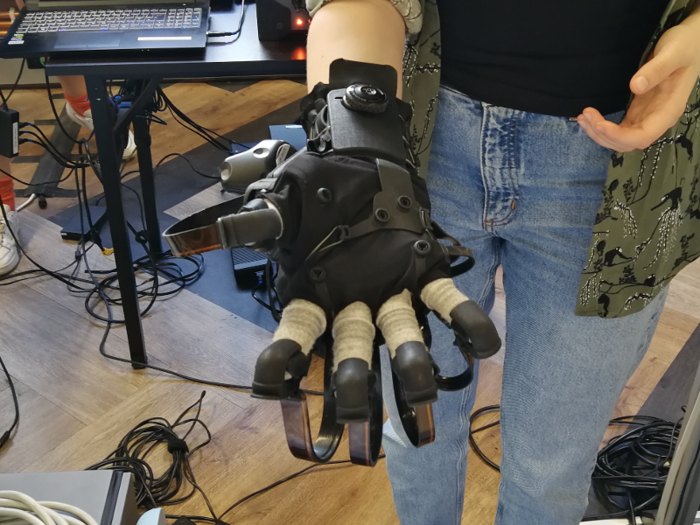
The glove was created by a company called HaptX, which specializes in haptic feedback systems. It relays the feeling of touch with a bunch of inflatable pads, which inflate and deflate to create pressure on your own fingers.
The glove itself is a little heavy, and is has a long cable running out the back connecting it to the other hardware.
Once the glove was synced up with the robot hand, I was ready to go.
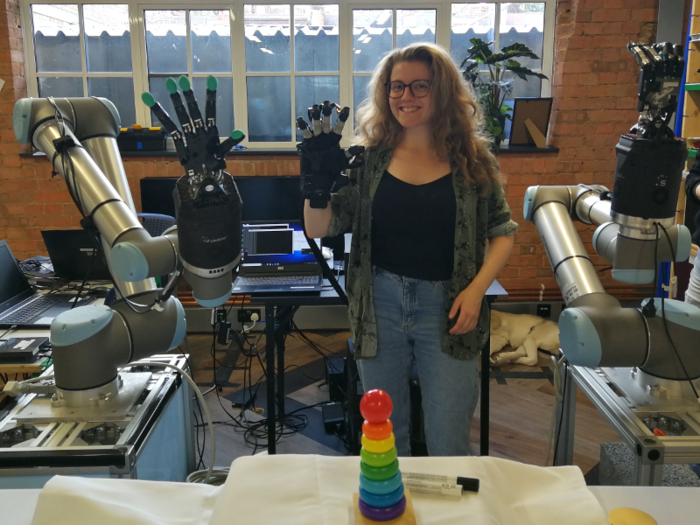
To sync up, I had to place my hand in a similar position and at a similar angle to the resting position of the hand.
I could even feel very gentle sensations from the robot.
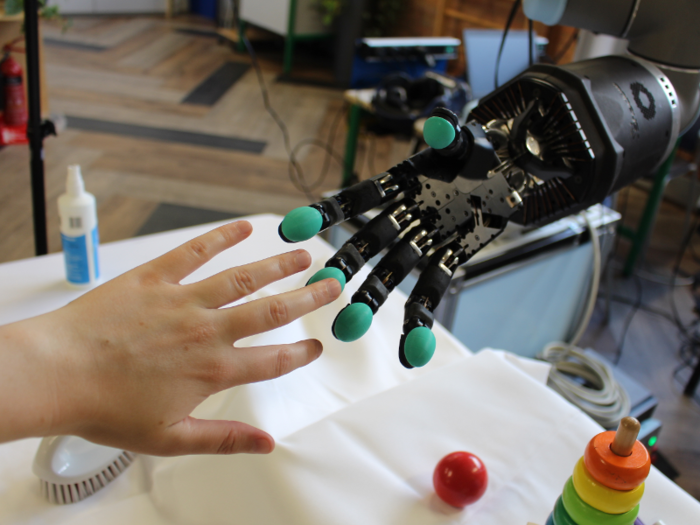
The pads on the robot's fingers were developed by Syntouch, and even the feeling of someone touching the pads very lightly was clearly perceptible through the glove.
I was given a simple task: to remove wooden hoops from a stick.

I was amazed at how quickly I got used to the hands, and taking the hoops off the stick was disarmingly easy. The dexterity and delicacy with which the hand was able to mirror my movements was amazing.
Putting the hoops back on the stick was not so easy.

When the time came to replace the hoops, the hand started to feel decidedly less dexterous. I dropped multiple rings, and gave up on replacing them in the right order. It felt a bit like my motor control had regressed to that of my 5 year-old self. Eventually, I managed it, but it took me about three times as long as it had to remove the hoops.
Robots can be somewhere you don't want to be.
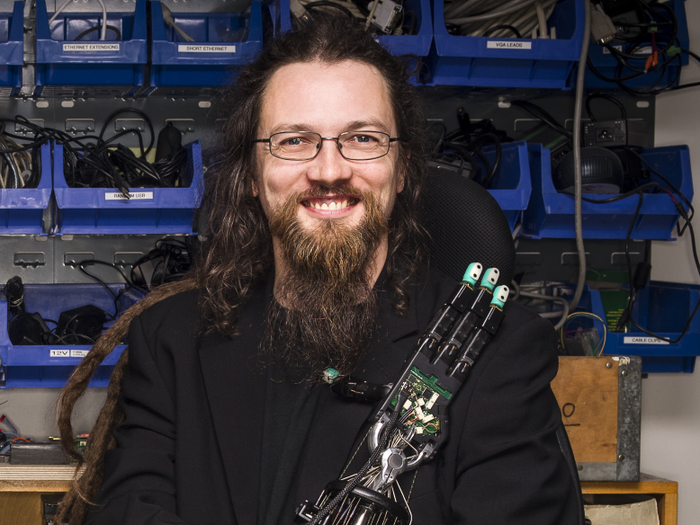
Teleoperation is the ability to do things from far away, as managing director Rich Walker explains.
"[It's] the idea that the robot hand could be somewhere that you don't want to be. Difficult, dirty, dangerous, distant," he told Business Insider.
One example he gives is the handling of radioactive material in nuclear power plants, which is currently done using big, heavyweight gloves through walls.
Could robots let you go on vacation?
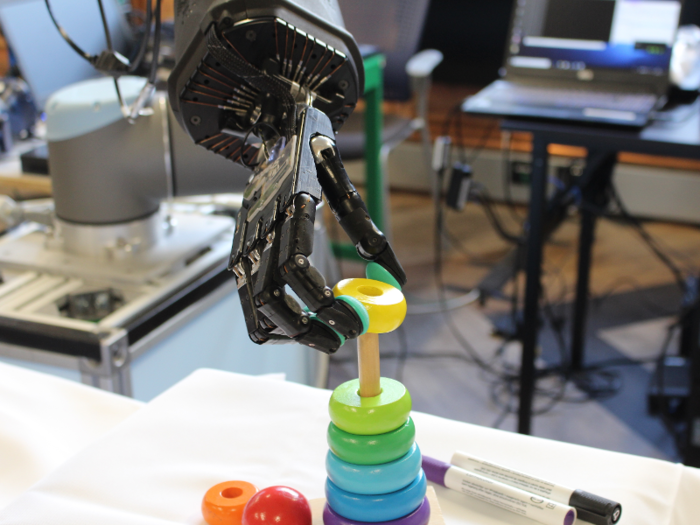
However, this robot in particular was inspired by a more futuristic idea: remote, VR holidays. Walker says the company was approached in the middle of last year by Japanese airline All Nippon Airways, which is developing its own "telepresence" wing. All Nippon asked for a demo machine to showcase their idea that, in the future, workers could go on holiday using just a VR headset and a robot placed far away, be it a mountain lake or a beach.
Walker doesn't anticipate that the current iteration of the robot and gloves will become a popular alternative to holidays. "It's a bit hard to get out of the office," he said.
However, he doesn't discount the idea that VR immersion in remote settings could one day become mainstream. "I'm still surprised by the amount of time people spend in 'World of Warcraft,' which is going on holiday in a fantasy world," he said.
The technology still has a very long way to go before it could give people any kind of enjoyable VR-enabled vacation, however.
The pads are good at mimicking pressure, but heat and texture are still beyond them — not to mention bulky VR headsets and robots trundling around tourist sites translating to a pretty jarring holiday experience.
But the industry applications seem far less distant now I've got my hands on the hardware.
Popular Right Now
Popular Keywords
Advertisement